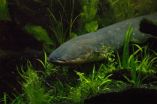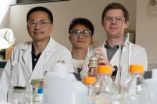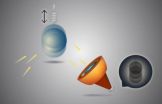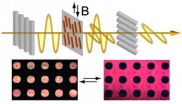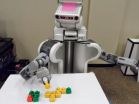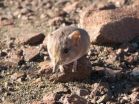(Press-News.org) GAINESVILLE, Fla. — The famous slogan is "A diamond is forever," but that phrase might be better suited to herpes: Unlike most viruses, which succumb to the immune system's attack, herpes remains in the body forever, lying in wait, sometimes reactivating years later.
Researchers have long wondered what causes herpes viruses — two strains of which are linked to cancer — to reactivate after remaining dormant once the initial infection resolves. Now a team of researchers, including two University of Florida scientists, has discovered that interactions with other infections later in life can trigger these dormant viruses to resurface and cause disease.
Understanding more about how specific pathogens interact with each other could help scientists devise new and better ways to combat these infections and the diseases they cause, the researchers write in a paper published today (June 26) in the journal Science.
"Probably 95 percent of us have been infected with at least one herpes virus, but many people never have a problem with it," said study co-author Rolf Renne, Ph.D., a professor of molecular genetics and microbiology in the UF College of Medicine and a member of the UF Genetics Institute and the UF Health Cancer Center. There are eight herpes viruses that infect humans, causing diseases that range from cold sores and chickenpox to mononucleosis and cancer. "The question has been: What happens to reactivate these viruses to cause disease?"
Led by researchers at the Washington University in St. Louis, the study found that parasite infections later in life can spark an immune reaction that clears the way for the herpes virus to reactivate. In this case, the scientists were studying a specific herpes virus linked to a form of cancer called Kaposi sarcoma, human herpes virus 8.
The researchers discovered that after initial infection by the virus, a protein called interferon gamma keeps herpes in check, which explains why the virus typically remains dormant in the body. But when the immune system later responded to an infection with a parasitic worm called a helminth, another protein called interleukin 4 was released, which not only blocked interferon gamma from doing its job but also directly activated virus replication. When the virus replicates, it infects new cells, increasing the chances a cancerous tumor will form, Renne said.
"The fact that the virus can 'sense' the immune reaction to a worm and respond by reactivating is a remarkable example of co-evolution," said senior author Herbert W. Virgin IV, M.D., Ph.D., of Washington University in St. Louis. "We think other interactions between multiple infectious agents and the immune system will be discovered over time that we will view as similarly sophisticated or maybe even devious. Understanding these interactions will help us survive in a complex microbial world."
The Washington University in St. Louis researchers made the discovery first by studying a mouse herpes virus. UF researchers were able to duplicate these findings in human cells infected with the Kaposi sarcoma-associated herpes virus.
Infections with the helminth parasite occur frequently in developing countries, including sub-Saharan Africa, where cases of Kaposi sarcoma are also particularly common.
INFORMATION:
Funding from the National Institutes of Health supported the study. Contributors included lead author Tiffany Reese, Ph.D., the Damon Runyon postdoctoral fellow at Washington University in St. Louis, and Hong Seok Choi, a doctoral student in the UF College of Medicine's Interdisciplinary Program in Biomedical Sciences who works in Renne's lab, as well as collaborators from Washington University in St. Louis, Emory University, the Indiana University School of Medicine, Harvard Medical School and the St. Jude Children's Research Hospital.
New infections cause dormant viruses to reactivate
2014-06-26
ELSE PRESS RELEASES FROM THIS DATE:
Fighting parasitic infection inadvertently unleashes dormant virus
2014-06-26
Signals from the immune system that help repel a common parasite inadvertently can cause a dormant viral infection to become active again, a new study shows.
Further research is necessary to understand the clinical significance of the finding, but researchers at Washington University School of Medicine in St. Louis said the study helps illustrate how complex interactions between infectious agents and the immune system have the potential to affect illness.
The results appear online June 26 in Science Express.
The scientists identified specific signals in mice that ...
Sequencing electric eel genome unlocks shocking secrets
2014-06-26
EAST LANSING, Mich. — For the first time, the genome of the electric eel has been sequenced. This discovery has revealed the secret of how fishes with electric organs have evolved six times in the history of life to produce electricity outside of their bodies.
The research, published in the current issue of Science, sheds light on the genetic blueprint used to evolve these complex, novel organs. It was co-led by Michigan State University, University of Wisconsin-Madison, University of Texas-Austin and the Systemix Institute.
"It's truly exciting to find that complex ...
Water-cleanup catalysts tackle biomass upgrading
2014-06-26
Rice University chemical engineer Michael Wong has spent a decade amassing evidence that palladium-gold nanoparticles are excellent catalysts for cleaning polluted water, but even he was surprised at how well the particles converted biodiesel waste into valuable chemicals.
Through dozens of studies, Wong's team focused on using the tiny metallic specks to break down carcinogenic and toxic compounds. But his latest study, which is available online and due for publication in an upcoming issue of the Royal Society of Chemistry's journal Chemical Science, examined whether ...
Not much force: Berkeley researchers detect smallest force ever measured
2014-06-26
What is believed to be the smallest force ever measured has been detected by researchers with the Lawrence Berkeley National Laboratory (Berkeley Lab) and the University of California (UC) Berkeley. Using a combination of lasers and a unique optical trapping system that provides a cloud of ultracold atoms, the researchers detected a force of approximately 42 yoctonewtons. A yoctonewton is one septillionth of a newton and there are approximately 3 x 1023 yoctonewtons in one ounce of force.
"We applied an external force to the center-of-mass motion of an ultracold atom ...
Let there be light: Chemists develop magnetically responsive liquid crystals
2014-06-26
RIVERSIDE, Calif. — Chemists at the University of California, Riverside have constructed liquid crystals with optical properties that can be instantly and reversibly controlled by an external magnetic field. The research opens the door to display applications relying on the instantaneous and contactless nature of magnetic manipulation—such as signage, posters, writing tablets, and billboards.
Commercially available liquid crystals, used in modern electronic displays, are composed of rod-like or plate-like molecules. When an electric field is applied, the molecules rotate ...
Researchers conduct comprehensive review of treatments for depression in cancer patients
2014-06-26
Depression is common in cancer, up to half of all patients facing the disease experience depressive symptoms, ranging from mild to severe. When depression co-exists with cancer, patients may be at an increased risk of death from cancer and from suicide.
Antidepressants are commonly prescribed, but the evidence on their efficacy is mixed. The role of antidepressants in treating cancer-related depression has not been rigorously studied. To identify best practice for the treatment of depression in cancer, Dartmouth researchers completed a systematic review and meta-analysis ...
Ask the crowd: Robots learn faster, better with online helpers
2014-06-26
University of Washington computer scientists have shown that crowdsourcing can be a quick and effective way to teach a robot how to complete tasks. Instead of learning from just one human, robots could one day query the larger online community, asking for instructions or input on the best way to set the table or water the garden.
The research team presented its results at the 2014 Institute of Electrical and Electronics Engineers International Conference on Robotics and Automation in Hong Kong in early June.
"We're trying to create a method for a robot to seek help ...
New species of small mammal discovered by scientists from California Academy of Sciences
2014-06-26
SAN FRANCISCO (June 26, 2014) – Scientists from the California Academy of Sciences have discovered a new species of round-eared sengi, or elephant-shrew, in the remote deserts of southwestern Africa. This is the third new species of sengi to be discovered in the wild in the past decade. It is also the smallest known member of the 19 sengis in the order Macroscelidea. The team's discovery and description of the Etendeka round-eared sengi (Macroscelides micus) is published this week in the Journal of Mammalogy.
While collecting and examining sengi specimens from southwestern ...
Miriam Hospital researchers develop app focused on making obese adults less sedentary
2014-06-26
PROVIDENCE, R.I. – Even individuals who exercise a lot can be at risk for health problems if they also spend a lot of time in sedentary behaviors, such as sitting. More sedentary time, regardless of physical activity levels, is associated with greater risk for obesity, cardiovascular disease and mortality. However, a smartphone-based intervention developed by researchers at The Miriam Hospital can produce short-term reductions in sedentary behavior that may be effective in improving health. The findings of a study that utilized this app are published in PLOS ONE, a peer-reviewed ...
You can't teach speed: Sprinters break 10-year rule
2014-06-26
ALLENDALE, Mich. — New research shows world-class sprinters are born, not created. Grand Valley State University researchers found that exceptional speed prior to formal training is a prerequisite for becoming a world-class sprinter. The findings are published in the online journal PeerJ, https://peerj.com/articles/445/.
The research, conducted by Michael Lombardo, professor of biology, and Robert Deaner, associate professor of psychology, shows that the developmental histories of elite sprinters contradict the popular deliberate practice model of expertise. According ...

